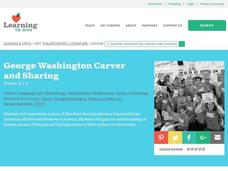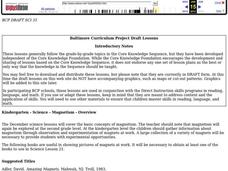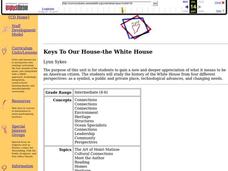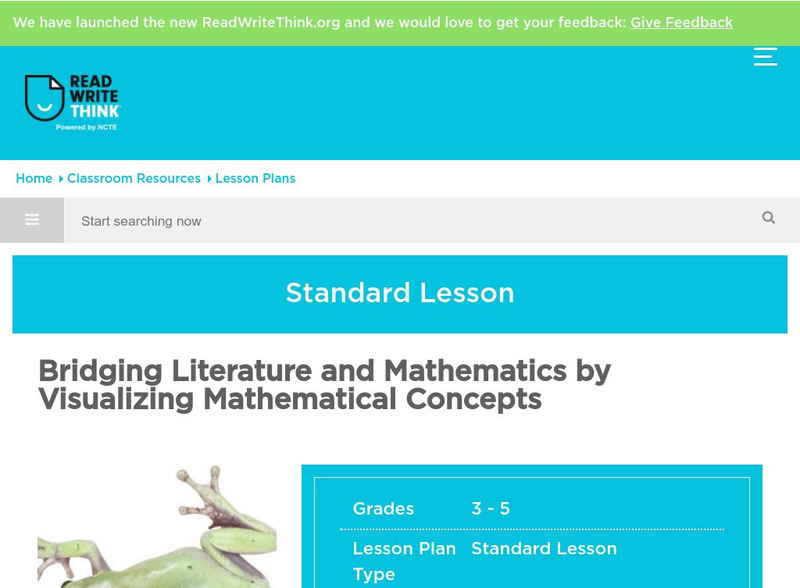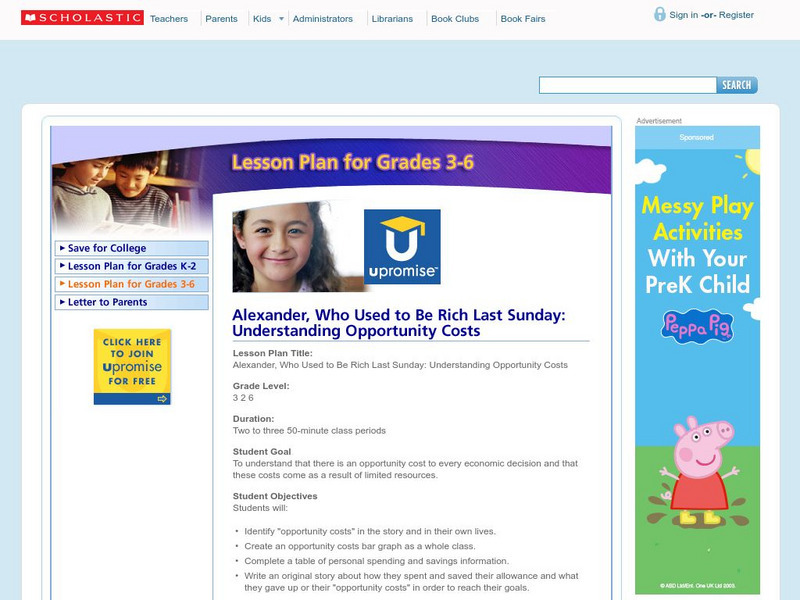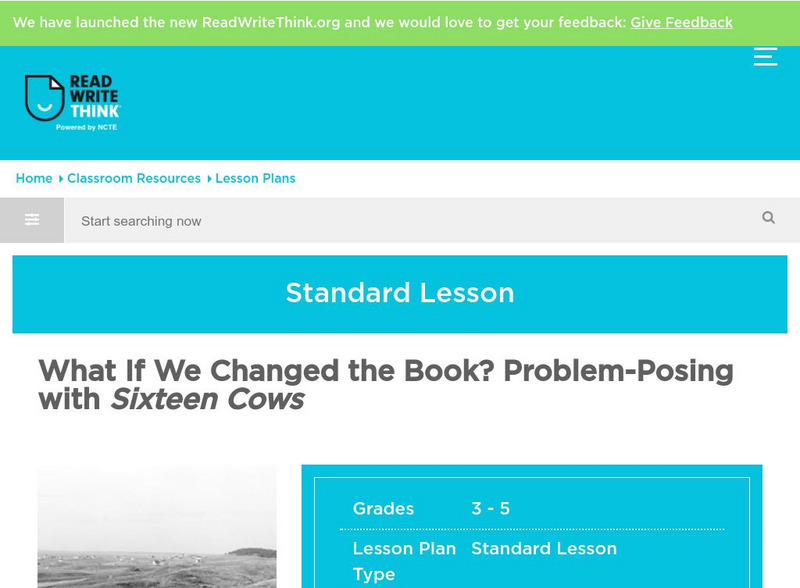Curated OER
Space: Stars and Planets
Pupils observe and report that the moon can be seen sometimes at night and sometimes during the day. They describe how changes to a model can help predict how the real thing can be altered. Students explain the essential fact of the...
Curated OER
Making the World a More Beautiful Place
Students discover how they can contribute in a positive manner in their community. In this service learning lesson, students experience literature through the lens of responsible citizenship.
Curated OER
George Washington Carver and Sharing
Young scholars research George Washington Carver. In this science lesson, students discuss George Washington Carver's contribution to science. Young scholars explain how peanut butter is produced.
Curated OER
Art and Anatomy: The Vitruvian Teen
Students are introduced to the history of showing the human anatomy. In groups, they measure their height and arm spans to create a graph and determine if their measurements support Vitruvius' work. Individually, they make their own...
Curated OER
Honoring the Past
Learners explore the beginnings of the United States and the freedoms we enjoy. They discover important events, people, monuments in Washington, D.C., and its history. Students investigate ways to honor and remember important people and...
Curated OER
Everybody Needs Somebody
Students brainstorm feelings words and discuss what causes us to have feelings. Using artwork, they discuss how different artists show feelings and emotions. Using the internet, they research how other cultures express their feelings and...
Curated OER
MAGNETISM
Students infer that there are forces we cannot see that act upon objects, experiment with magnets to show a push and/or pull force, and participate in a magnet game.
Curated OER
Keys to Our House-The White House
Pupils explore what it means to be an American citizen. Students investigate the history of the White House from a variety of perspectives: as a symbol, a public and private place, and changing needs.
Curated OER
Won't You Celebrate With Me: The Joy of Lucille Clifton
Young scholars explore the concept of poetry through movement and song. They watch Lucille Clifton read her poem, and write their own poem.
Curated OER
Keys To Our House-the White House
Students explore the history of the White House from four different perspectives: as a symbol, a public and private place, technological advances, and changing needs. They take a virtual tour of the White House and explore its history....
Curated OER
November Science
Students review that all people, plants, and animals live on Earth. They classify objects found in the environment as living or nonliving.
Curated OER
Environmental Education/Water Pollution
Fifth graders play a game in which they list as many environmental issues or terms in alphabetical order. They brainstorm ways they can save the environment and create a mural that displayed research found from the internet and Encarta.
ReadWriteThink
Read Write Think: Bridging Literature and Mathematics
Contains plans for five 50-minute interdisciplinary lessons that ask students to write about math-related, informational books such as "Actual Size" (Jenkins, 2004) and "If You Hopped Like a Frog" (Schwartz, 1999). Students use books...
Scholastic
Scholastic Lesson Plan: Alexander, Who Used to Be Rich..
This multipart lesson plan the cost of opportunities when you have limited resources. It uses the hilarious children's book, "Alexander, Who Used to Be Rich Last Sunday" by Judith Viorst to drive the lesson home.
ReadWriteThink
Read Write Think: What if We Changed the Book? Problem Posing With Sixteen Cows
After reading a piece of math-related children's literature aloud, students pose and solve new problems by asking what-if questions about the events in the story.
Scholastic
Scholastic Lesson Plan: A Chair for My Mother
This extensive lesson plan uses the Children's Literature book "A Chair for My Mother," by Vera B. Williams to teach the concepts of saving and reaching a goal. Primary students are the target for this lesson.


